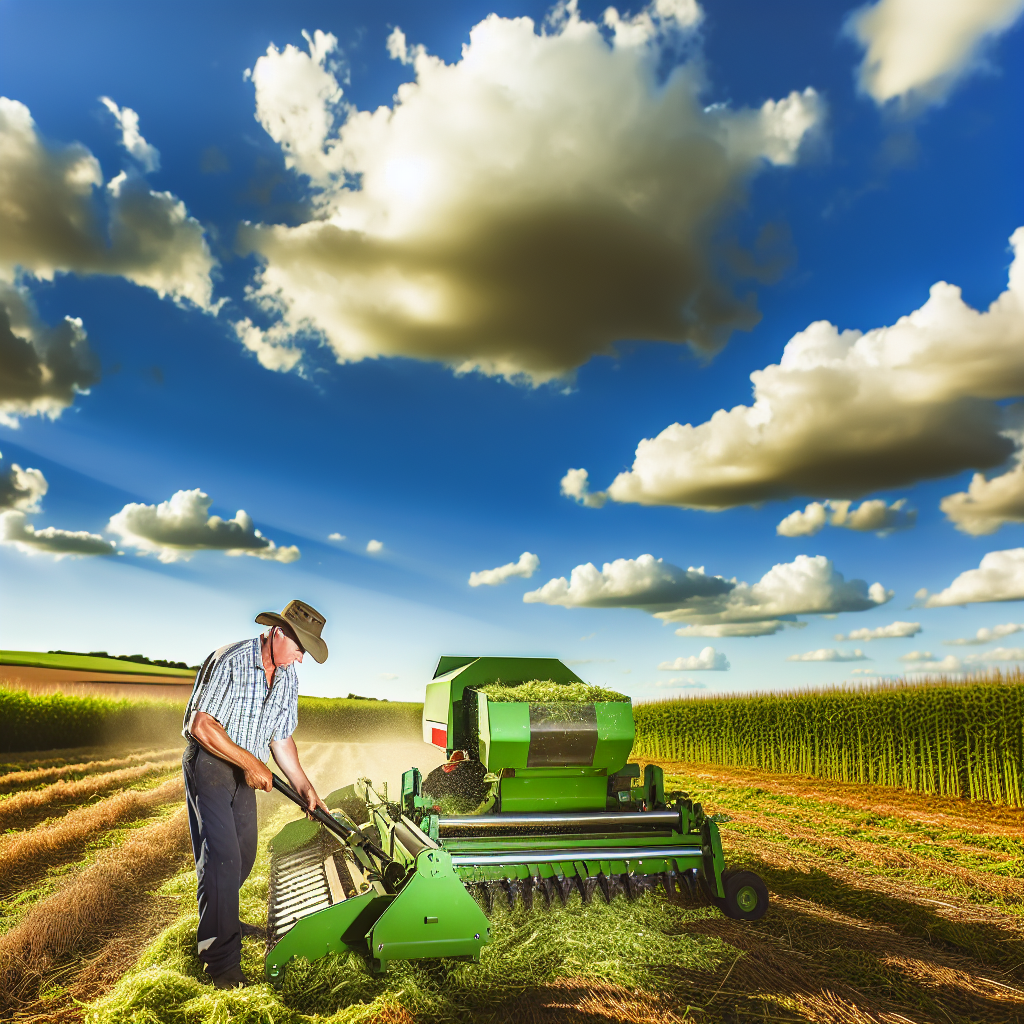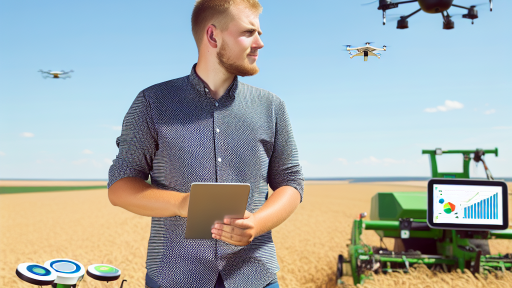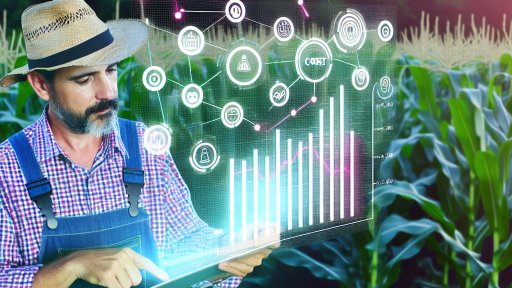Introduction to Automated Machinery in Agriculture
Automated machinery has transformed modern agriculture significantly.
Farmers increasingly rely on technology to boost productivity.
This trend reflects a response to labor shortages in the industry.
Many agricultural operations now use robotics for various tasks.
Consequently, these innovations streamline farming processes.
Rise in Popularity
The popularity of automated machinery has risen in recent years.
Advancements in technology have made machinery more accessible.
Farms are adopting these tools to remain competitive.
Moreover, automated systems enhance efficiency and reduce costs.
Impact on Labor
As automated solutions become mainstream, labor demands change.
Farmers can allocate human resources to more strategic roles.
This shift allows for a focus on management and decision-making.
In addition, fewer laborers are needed for repetitive tasks.
Consequently, many workers transition to roles that require specialized skills.
Challenges and Considerations
Despite the benefits, adopting automated machinery poses challenges.
Transform Your Agribusiness
Unlock your farm's potential with expert advice tailored to your needs. Get actionable steps that drive real results.
Get StartedInitial investments can be high for small farms.
Furthermore, training is essential to operate new technology effectively.
Farmers must also consider maintenance costs associated with machinery.
Ultimately, balancing these factors is crucial for successful implementation.
Types of Automated Machinery Used in Agriculture
Tractors
Tractors are the backbone of modern agriculture.
They power a variety of farm equipment.
Advanced technology has made tractors more efficient.
Many tractors now use GPS for accurate planting.
This technology reduces overlaps and waste.
Farmers can also automate tasks like tilling and planting.
These innovations save time and labor costs.
Drones
Drones have transformed agricultural practices dramatically.
They offer precision in monitoring crops from above.
Farmers use drones to assess plant health and growth.
These devices can identify issues early, increasing yields.
Additionally, drones can optimize pesticide use.
This minimizes chemical exposure and environmental harm.
Moreover, they provide real-time data for better decision-making.
Robotic Harvesters
Robotic harvesters are changing how farmers gather crops.
They enhance efficiency during peak harvesting periods.
These machines can operate around the clock without breaks.
Furthermore, they can decrease labor costs significantly.
Advanced sensors enable precise picking without damaging produce.
Some robots can even distinguish between ripe and unripe fruit.
Showcase Your Farming Business
Publish your professional farming services profile on our blog for a one-time fee of $200 and reach a dedicated audience of farmers and agribusiness owners.
Publish Your ProfileAs technology advances, robotic harvesters will become more common.
The Role of Technology in Enhancing Productivity and Efficiency on Farms
Introduction to Agricultural Automation
Automated machinery is transforming agriculture worldwide.
This technology enhances productivity and operational efficiency.
As a result, farmers can produce more with less manual labor.
Benefits of Automated Machinery
Automation significantly reduces the need for manual labor.
This shift saves time and labor costs for growers.
Furthermore, automated systems improve consistency in production.
Increased Precision and Accuracy
Automated equipment can perform tasks with high precision.
This accuracy minimizes waste in resources like seeds and fertilizers.
Moreover, precision farming can lead to higher crop yields.
Time Management
Automation allows farmers to focus on strategic decisions.
Tasks are completed faster, freeing up time for other priorities.
This includes planning, market analysis, and crop management.
Examples of Automated Technologies
Various automated technologies are currently in use on farms.
Robotic harvesters are becoming common for many crops.
These machines efficiently pick fruits and vegetables.
Autonomous Tractors
Autonomous tractors are revolutionizing fieldwork.
They can plow, seed, and apply fertilizers without direct supervision.
Thus, farmers can multitask while these machines operate efficiently.
Drones in Agriculture
Drones are increasingly used for crop monitoring and spraying.
They provide real-time data about crop health and conditions.
This information aids in timely decision-making and resource allocation.
Addressing Labor Shortages
Labor shortages affect many agricultural regions globally.
Automated machinery helps mitigate this issue.
Farmers can maintain productivity despite fewer available workers.
Enhanced Worker Safety
Automation reduces the risk of injuries associated with manual labor.
This is particularly crucial in physically demanding tasks.
As a result, the farming environment becomes safer for all employees.
The Future of Automation in Agriculture
The role of technology in agriculture will continue to grow.
Innovations will lead to even greater efficiency and productivity.
Farmers must stay informed about emerging technologies.
Ultimately, embracing these advancements benefits the entire industry.
Learn More: Transforming Farm Operations Through Blockchain-Based Supply Chains
Case Studies Demonstrating Reduced Labor Costs through Automated Machinery
Introduction to Automation in Agriculture
Automation in agriculture has transformed modern farming practices.
These advancements significantly reduce the need for manual labor.
Innovative machinery carries out tasks that once required a large workforce.
Consequently, farmers experience lower labor costs and increased efficiency.
Case Study: Precision Farming with Drones
FarmTech Solutions implemented drones on their farms last year.
Initially, they used drones for crop monitoring and assessment.
This approach allowed them to identify issues faster and more accurately.
Showcase Your Farming Business
Publish your professional farming services profile on our blog for a one-time fee of $200 and reach a dedicated audience of farmers and agribusiness owners.
Publish Your ProfileAs a result, they reduced labor costs by 40% compared to previous methods.
Drones collect valuable data while minimizing the need for scouting fields.
Case Study: Automated Harvesting Systems
Green Valley Farms adopted automated harvesting systems in 2022.
The system uses advanced robotics to harvest fruits and vegetables.
This technology significantly decreased the labor force required during peak seasons.
The farm reported a 30% reduction in labor costs within a few months.
Furthermore, automated systems work faster and with greater precision.
Case Study: Seed Planting Robots
Harvest Innovations introduced seed planting robots this planting season.
These robots efficiently plant seeds with programmed precision and speed.
Farmers observed a significant drop in manual labor requirements.
Labor costs decreased by approximately 25% as a direct result.
Additionally, planting times shortened, leading to an earlier yield.
Implications of Automated Machinery in Agriculture
These case studies illustrate the effectiveness of automated machinery.
Farmers reduce labor costs and increase efficiency significantly.
Automation in agriculture enhances productivity while preserving resources.
Investing in these technologies proves beneficial for modern farms.
Explore Further: How Drones Enhance Crop Monitoring And Management
Impact on Workforce
Job Displacement
Automated machinery has transformed agricultural practices significantly.
However, this transformation comes with concerns about job displacement.
Many traditional farming roles face potential redundancy.
For instance, equipment operators may no longer be necessary.
Consequently, some workers might find themselves unemployed.
Research indicates that mechanization can lead to reduced labor demand.
Undeniably, these changes challenge existing job security in the sector.
Job Creation in Tech-Focused Sectors
On the other hand, automation also creates new job opportunities.
These opportunities primarily emerge in tech-focused agricultural sectors.
For example, positions in machinery maintenance and repair are on the rise.
Furthermore, data analysis roles become increasingly crucial.
Farmers now need experts to interpret data collected by machines.
Additionally, innovative technology usage requires skilled operators.
Overall, despite job displacement, automation fosters new employment landscapes.
Balancing the Two Sides
The agriculture sector must find a way to balance displacement and creation.
Training programs can play a vital role in this transition.
Such programs help workers adapt to changing job requirements.
Moreover, collaboration between industry and educational institutions is essential.
This partnership can ensure a skilled workforce ready for future challenges.
Ultimately, embracing technology can lead to a more efficient agricultural system.
By adapting proactively, the workforce can thrive alongside automation.
Discover More: The Key Benefits Of Agri-Fintech Solutions For Small Scale Farmers

How Automation Helps Address Labor Shortages in Rural Areas
Introduction to Labor Shortages
Rural areas face significant labor shortages in agriculture.
Showcase Your Farming Business
Publish your professional farming services profile on our blog for a one-time fee of $200 and reach a dedicated audience of farmers and agribusiness owners.
Publish Your ProfileThis issue affects crop production and livestock management.
Many farmers struggle to find reliable workers.
Role of Automated Machinery
Automated machinery provides efficient solutions for farmers.
It helps reduce dependence on manual labor.
Machines can perform tasks faster than human laborers.
For instance, automated harvesters can quickly gather crops.
Improving Productivity
Automation enhances overall productivity on farms.
Farmers can increase their output with fewer resources.
Essential tasks like planting and irrigation become streamlined.
Additionally, automated systems can operate continuously.
This capability enables farmers to maximize their yields.
Cost-Effectiveness
Investing in automated machinery can be cost-effective.
Although the initial investment may be high, long-term savings occur.
Automated machinery reduces labor costs significantly.
As a result, farmers can reallocate funds to improve other areas.
Attracting New Workers
Automation can attract a new workforce to agriculture.
Younger generations show more interest in modern technology.
They are eager to work with advanced farming equipment.
Moreover, automation makes agricultural jobs more appealing.
Benefits of Automation in Agriculture
Automated machinery addresses crucial labor shortages.
It enhances productivity, reduces costs, and attracts new workers.
Consequently, automation plays a vital role in the future of agriculture.
Learn More: Enhancing Farm Productivity Through Agri-Fintech Innovations
The Environmental Benefits of Automated Machinery
Reduced Soil Compaction
Automated machinery minimizes soil compaction during farming operations.
This reduction is crucial for maintaining soil health.
Healthy soil supports root growth and enhances crop yields.
Moreover, less compaction improves water infiltration rates.
As a result, crops receive the moisture they need for optimal growth.
Improved Crop Management
Automated systems allow for precise planting and harvesting.
This precision reduces waste and maximizes resource efficiency.
Additionally, machinery equipped with sensors monitors crop health.
This capability enables timely interventions when necessary.
Farmers can apply fertilizers or pesticides more effectively.
Consequently, this reduces the environmental impact of chemical use.
Enhanced Efficiency
Automated machinery operates with greater consistency than human labor.
This consistency leads to a more predictable agricultural output.
Furthermore, automated systems can work continuously, day or night.
This flexibility helps farmers meet market demands quickly.
In turn, this efficiency contributes to higher profitability.
Sustainability Practices
Incorporating automated technology encourages sustainable farming practices.
Showcase Your Farming Business
Publish your professional farming services profile on our blog for a one-time fee of $200 and reach a dedicated audience of farmers and agribusiness owners.
Publish Your ProfileFarmers can track resource use and adjust strategies accordingly.
This practice limits the ecological footprint of farming activities.
Ultimately, it promotes the long-term health of agricultural ecosystems.
Future Trends in Agricultural Automation
Emerging Technologies
New advancements in robotics are transforming agriculture.
For instance, autonomous tractors simplify field operations.
Moreover, drones monitor crop health efficiently.
These technologies enhance precision agriculture practices.
Smart Farming Solutions
Smart farming utilizes IoT devices extensively.
Sensors collect data on soil moisture and temperature.
Farmers receive real-time insights to optimize their yields.
This approach reduces resource waste and increases productivity.
Integration of Artificial Intelligence
Artificial intelligence is revolutionizing decision-making in agriculture.
AI software forecasts weather patterns effectively.
Additionally, it predicts crop diseases, enabling proactive responses.
This leads to healthier crops and better harvests.
Enhanced Labor Efficiency
Automated machinery significantly reduces labor requirements.
It allows farmers to focus on strategic planning and quality management.
This shift improves both efficiency and profitability.
Potential Advancements on the Horizon
The future holds even more innovations for agricultural automation.
Developments in gene editing may enhance crop resilience.
Furthermore, advancements in battery technology will improve machinery.
These changes promise a more sustainable agricultural landscape.
Additional Resources
The Impact of Automated Farming on the Agriculture Industry
Increases in Labor Quality Contributed to Growth in U.S. Agricultural …




